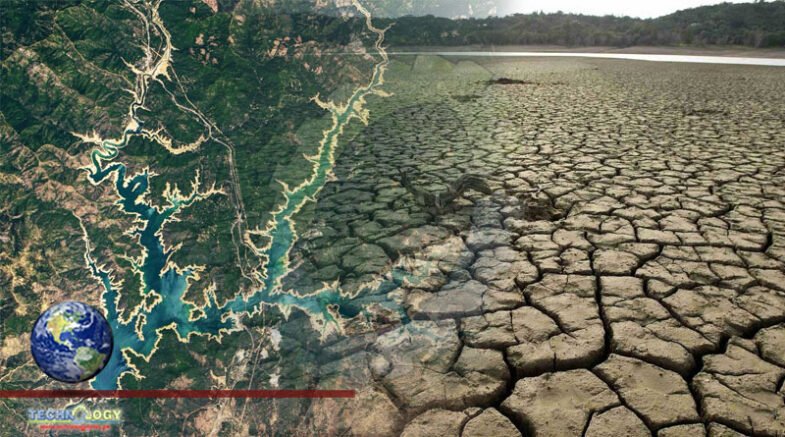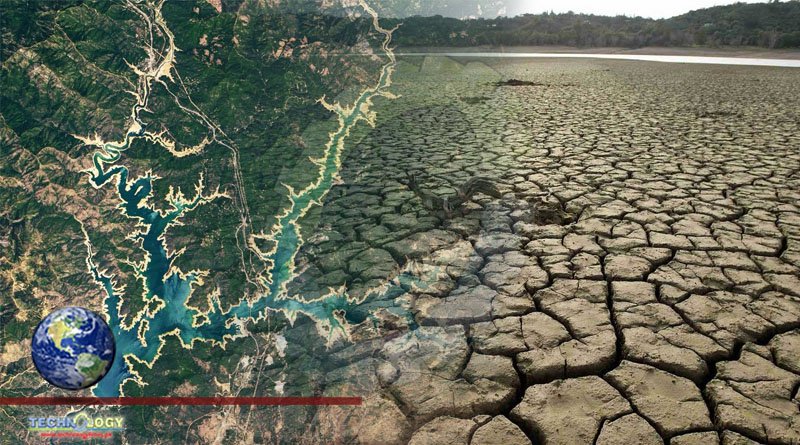Research by the World Resources Institute (WRI) shows that humans are on course to use 56% more water by 2030 than is sustainable. The cost of solving the challenge is $1 trillion a year, the think tank calculates.

Floods in Germany and China, drought and wildfires in California, and more in Greece. Over the past 12 months, water has moved back into the headlines, and the systemic water-related risks long relegated to backroom discussions have become a reality for farmers, producers, companies and communities around the world.
In the United States alone, long-term water scarcity is forcing Californian almond farmers to pull their trees from the ground, while the federal government has just mandated big reductions to some users of the Colorado River’s flow. How to build resilience and withstand these developments is the theme of this year’s World Water Week, currently underway online out of Stockholm.
Research by the World Resources Institute (WRI) shows that humans are on course to use 56% more water by 2030 than is sustainable. The cost of solving the challenge is $1 trillion a year, the think tank calculates. That represents less than 1% of GDP for the United States and China and up to 8% of GDP for some poorer economies, like Mali. The cost of doing nothing however, could be up to a 6% decline in global GDP by 2050.
Dealing with a crisis of this size is incredibly challenging and steeped in the complexities of politics and conflicts between special-interest groups.
It sounds daunting, but this is not the first time the world has faced and been forced to step up to a global environmental challenge. The 1992 United Nations Framework Convention on Climate Change (UNFCCC) began in earnest the push to build a global international climate change law and policy governance regime. This has been critical to international efforts to address climate change. Non-governmental organisations and businesses are increasingly active in driving measures to reduce greenhouse gases and move the global economy to net-zero emissions.
The lessons from this 30-year-long, often wavering, global approach to tackling climate change can help source solutions for the water crisis.
The most urgent one is that speed is key, as the most recent report from the U.N. Intergovernmental Panel on Climate Change reiterates. The global water crisis is evolving extremely rapidly, meaning there is no time to replicate three decades of climate-change negotiations and conventions.
Instead, there needs to be an acceleration of action, with consumers, policymakers, corporates and investors working in a co-operative way towards a clear unifying global objective. Climate change found its so-called North Star with an aspirational target to limit the average global temperature increase to 1.5 degrees Celsius.
Second, water’s North Star needs to be based upon a universally accepted approach to data and science. However, there is no equivalent to the IPCC for water, and as a result no comprehensive, agreed-upon set of science and data to use as a basis for recommendations for policymakers. Replicating an IPCC for water is neither realistic nor achievable in the timeframe or scale required.
Instead, a more rapid response is needed, working with existing scientific organisations to develop and agree on a current scientific position on the status of freshwater, consider what type of policy recommendations and discussions should occur, and create a common uniformly recognised system for measurement and accounting. The latter has been particularly important for companies looking to report on their greenhouse gas exposure, and for organisations like CDP, WRI and Ceres looking to assess corporate risk.
Third, rapid mobilisation of the capital needed to invest in water and scale up technology is key. That demands both the creation of relevant incentive structures to push or pull capital into the water sector, and appropriate mechanisms to identify, quantify and manage water-related risks on all sides of the investment equation.
In the case of climate change, both national and private-sector pledges, and the establishment of multilateral funds like the Green Climate Fund, have worked to stimulate investment into renewables and low-carbon financial products. Even more so, recognition of the physical and transition risks that climate change now presents have become a key driver for action, especially in the context of its impact on physical assets.
A critical element in enabling financing will be to improve understanding of the value of water, both from a physical and economic perspective and from a social, environmental, and political perspective. One of the challenges to recognise and overcome is that the benefits and returns of investment in water do not always flow directly back to the initiator of that investment or solution. Instead, they may flow to a local community or environmental ecosystem. Accelerating financing hinges upon quantification of these non-financial benefits.
Finally, there is the need to communicate and unify around a common goal. Water has traditionally been a very siloed and often internally focused community. This has resulted in a diversification of priorities, competition for often limited resources, and even conflict between those working on on the various targets for water laid out in U.N. Sustainable Development Goal 6. Competition for space on busy agendas in boardrooms and in the media has meant that water has failed to achieve the exposure it needs.
In comparison, climate change is increasingly mainstream. Influential finance and business leaders like former Bank of England Governor Mark Carney and Larry Fink, chief executive of BlackRock (BLK.N), talk openly about the risks of failing to act, and youth demonstrate on the streets in their thousands calling for action. Public, corporate and investor awareness of the need to act on climate is high.
More than ever, clear, decisive and unified action on water is required. We have delayed long enough.
Source Reuters
